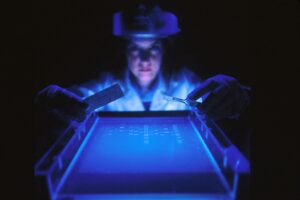
“Fortress stores” featuring security-tagged products and locked display cases are becoming a reality for shoppers in parts of the United Kingdom and the United States. In these regions, even everyday items like chicken and steaks are encased in wire security cages, while jars of instant coffee come equipped with GPS tracking. Meanwhile, in Australia, similar measures are beginning to take hold, with trials of security tags on meat and locked displays for expensive spirits and wine at Dan Murphy’s and BWS. These changes come as retailers respond to a surge in theft.
According to recent data, Australia experienced 268,666 cases of retail theft last year, accounting for nearly half of all thefts nationwide, even as residential thefts declined. This alarming trend has prompted major retailers such as Woolworths, Coles, IGA, Bunnings, and Kmart to declare a “full-scale retail crime crisis.” The financial impact is significant, with merchandise losses in the 2024 financial year reaching A$7.79 billion, nearly 2% of total turnover.
Tightening In-Store Controls
The rise in theft has led retailers to implement more stringent in-store security measures. Back in 2008, Woolworths began introducing self-serve checkouts, with assurances that traditional checkouts would remain. However, the shift towards self-service has necessitated increased security, such as the “public-view monitor” effect, which deters theft by displaying the shopper’s image on the screen.
Some supermarkets, like Coles, are trialing wheel-locking technology to prevent “push-outs” of unpaid goods. This system immobilizes trolleys if a customer attempts to leave without paying. Additionally, “smart gate” exits are becoming more common, only opening once payment is confirmed by cameras and computer vision systems.
Major chains have also expanded the use of computer-vision systems at self-checkouts. Woolworths, for instance, has implemented camera-based AI in over 250 stores, which flags mis-scans and prompts rescanning by changing indicator lights and displaying images of unscanned items. These technologies not only deter theft but also streamline the checkout process by automatically recognizing loose produce and reducing menu navigation.
Visible Security and Aggressive Thefts
In addition to digital measures, retailers are making security more visible. This includes deploying uniformed guards and equipping staff with body-worn cameras in high-risk locations. Such measures are often targeted at “risky facilities,” the minority of stores that account for the majority of incidents. For example, a US retailer found that 85% of its shoplifting occurred in just 20% of its stores.
The increase in retail theft and aggression is partly driven by the enhanced detection capabilities of cameras, AI, and merchandise protection. However, these advancements have also led to more confrontations between staff and suspected offenders. As noted by QUT researchers, “customer aggression is growing,” with frontline staff bearing the brunt. Thieves have learned that aggression can deter staff from intervening, making retail theft a relatively low-risk crime.
Retailers are also contending with organized crime. Wesfarmers’ CEO Rob Scott has identified organized crime as a major threat, particularly in Victoria, while sports retailer Rebel has reported that raids are “out of control.” The CEO of independent supermarket chain Ritchies IGA recently stated that violence in Victorian stores has reached a “crisis point,” prompting considerations to close some locations. Earlier this year, Victoria Police’s Operation Supernova dismantled a syndicate accused of stealing $10 million in merchandise from Melbourne supermarkets over five months.
The Future of Shopping: Fortress or Freedom?
Despite the rise in retail theft, there is little evidence to support a widespread adoption of “fortress” security measures across all supermarkets, chemists, and large retailers in Australia. However, for the most affected stores, more targeted “fortress” measures, such as controlled entries and exits for high-risk aisles, are likely.
Other strategies include employing trained greeters, maintaining clear sightlines, and ensuring tidy, well-presented aisles to deter theft. While self-checkout was initially marketed as a convenience, it has led to increased tension and hostility, potentially diminishing the shopping experience. Shoppers and staff alike prefer a peaceful checkout process, free from conflicts.
Ultimately, if retailers cannot strike the right balance between security and customer experience, the question may become why anyone would choose to shop in person. As the retail landscape evolves, finding solutions that protect merchandise without alienating customers will be crucial for the industry’s future.







